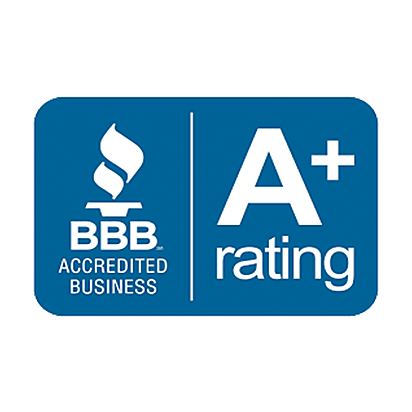Murfreesboro TN Water Mitigation
Before you can restore a property that's taken on water, further water damage first needs to be mitigated. And that's where water mitigation services enter the picture. Typically the main act that is performed before restoration can occur, mitigation largely consists of water extraction — both when it comes to standing water and any leftover water that may be saturating carpeting or other porous building materials. And while a water mitigation company can also perform water damage restoration services, mitigation and restoration are not the same thing. In this piece, we'll help you understand the mitigation process (and the tools and equipment that is typically used), and answer some of the most common questions that are asked of the practice. Let's take a closer look at water mitigation and how All Roofing, Siding and Gutters can help you in the water cleanup and restoration process. Water mitigation includes assessing, containing and preventing further damage from occurring on a water loss. That’s the main role of any company or individual that is performing water mitigation. Water mitigation also involves extracting water from the property so that it can be restored to pre-loss condition. While mitigation and restoration are separate tasks on a property, you can’t restore without mitigation. Further, water restoration usually follows water mitigation. Unless, of course, the property required demolition from significant structural damageWater Damage Mitigation Process Once a water damage mitigation firm arrives on site, it will carry out a variety of tasks before water damage restoration can proceed. Here’s a look at the steps involved in the mitigation process: In many cases, water intrusion is the result of Mother Nature and will have already stopped coming in by the time a contractor arrives on site. In other situations, the mitigation company may have to shut off a faucet, appliance, the main water valve to a property, provide emergency roof repairs to cover the roof with tarps or shrink wrap roofing material. Identifying the cause of the water loss and ensuring more water doesn’t enter the property is a big part of preventing further damage and a big part of a mitigation company’s job. In some cases, the property owner may be unsure of or apprehensive to attempt to stop the flow of water by themself. The Institute of Inspection, Cleaning, and Restoration Certification (IICRC), the premiere association serving the cleaning and restoration industry, classifies flood water in three categories: 1, 2 and 3. Category 1 water is generally recognized as "clean water," as similar to water out of the faucet but may have come from a broken water line or tub that overflowed. Category 2 water is known as "grey water," and likely contains some chemical contaminants and/or debris. Category 3 water is highly contaminated "black water," that may contain raw sewage, seawater, river water, etc. Part of a mitigation company’s overall assessment is determining the cleanliness of the water and if it poses a threat to property occupants. The cleanliness of the water will also determine how intense restoration efforts must be to adequately return the property to pre-loss condition and how much PPE needs to be worn when working on the property. Finally, the mitigation company will also likely extract any standing water from the property and may subsequently deploy portable extractors to extract any remaining water still within the property. Following extraction, the next step of water damage restoration can take place, which involves a dry out of the affected areaWater Mitigation vs Water Damage Restoration What's the difference? As we’ve noted earlier, the main difference between water mitigation and water damage restoration involves the process. As noted, water mitigation is essentially preventing any further damage from occurring. In other words, it’s what professional restoration contractors do before they get to the restoring step in an effort to contain the amount of loss a property suffers. This might include preservation of the property’s structural integrity, removing contents from the property that can be salvaged, and tarping off or containing other areas of the property where water damage could potentially spread. Eventually, mitigation also involves removing water from the property to essentially eliminate the threat of further spread and property damage. Extracting water from the property is typically performed using a commercial-grade truckmounted extractor to remove any standing water. Following this, water is often removed from carpeting or other soft surfaces with portable extractors. After mitigation occurs, water damage restoration begins. This is the process of restoring the structure so that it can return to pre-loss condition. The severity of the property damage will largely reflect the amount of restoration that needs to be performed. In some cases, setting up air movers and dehumidifiers on the property is enough to adequately dry the property out. In other cases, drywall will need to be cut out, carpeting and carpet padding removed, and antimicrobials applied to prevent subsequent mold growth. It also often consists of contents restoration to return the likes of a property’s hard and soft goods to pre-loss condition. If the building materials (such as carpet, flooring, drywall, electrical) need to be removed, reconstruction may be required before the property can be returned to its pre-loss condition. As you can see, it’s impossible to restore a water-damaged property until it’s properly mitigated, as professional restoration contractors need to know what needs to be done first. This cannot be learned until the situation is contained and damage doesn’t risk spreading any more throughout the property. What does a water mitigation company do? Simply put, it works to assess, contain and prevent more damage than what has already occurred on a property loss. When a mitigation company arrives on scene, it will work to first assess the quality of the water, contain the existing water and prevent its spread to other areas of the property, and then extract the water from the property using professional extraction equipment. In some cases, the water mitigation team will leave the property after the water has been extracted and give way to a water damage restoration contractor. However, in most cases, the water mitigation company also serves as the water damage restoration company. While it is possible for separate companies to respond to and perform these tasks on a property loss, it’s often easy for property owners to have one company that does both. All Roofing, Siding and Gutters, for instance, helps you every step of the way with water damage cleanup, water mitigation, mold remediation, smoke and fire damage restoration services, roofing, interior and exterior construction. Contact your insurance company to report your flood loss. When reporting a claim, ask about advance payment to help start the recovery. Then contact All Roofing, Siding and Gutters to schedule a quick response inspection of your property. Visit the FEMA.gov flood insurance page for more information on what to do after a flood. Selecting a water mitigation to clean up and restore your property after a disaster is a big decision. These projects are complex and require knowledge of multiple aspects of construction, including: damage mitigation, electrical, plumbing, roofing, remodeling, ground-up construction, insurance assistance, and complex project management. Look for a restoration contractor with the following qualifications: An experienced water mitigation contractor can help you restore your property as if the damage had never happened. All Roofing, Siding and Gutters is one of the nation's leading restoration companies. In 2020, All Roofing, Siding and Gutters was ranked #40 of the Top 100 Roofing Contractors in the nation. In addition to water damage mitigation, All Roofing, Siding and Gutters offers: shrink wrap roofing, roof tarping, loose lay membrane roofing, emergency roofing & repair, water mitigation, water damage restoration, mold remediation, catastrophic damage inspections, property damage documentation, testing & damage reports, fencing & perimeter security, disaster recovery services, permanent roof replacement, interior restoration services. and general contractor services. We have roofing & restoration locations across the country to serve you better.What is Water Mitigation?
1. Stop the Flow of Water
2. Assess Mitigation Requirements
3. Extract Water & Dry Out
What a Water Mitigation Company Does
What should I do if my home or business floods?
Can I handle water mitigation on my own?
How dangerous is flood water?
Can you help restore my belongings with contents restoration?
Do professionals follow any industry standards?
Where can I find information on Disaster Assistance?
How to Select a Water Mitigation Contractor





